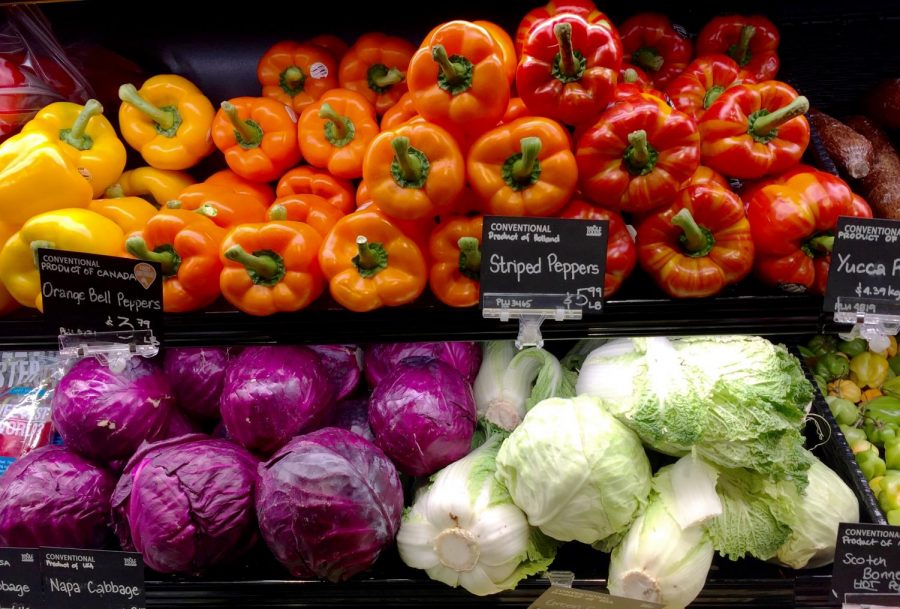Stores should offer students healthy food discounts
The prices for produce, especially organic, are often so high that many students consider eating food with less nutritional value necessary.
May 15, 2019
One major challenge college students struggle with is trying to stay healthy. This means getting exercise, being active and most importantly eating healthy. Once students move out of the dorms, they must plan their own meals.
Due to the prices of the nutritious items students can find in Safeway, eating healthy becomes almost impossible with an average student income. The cost of organic and healthy food needs to be reduced in order for students to afford healthy eating habits.
There is a simple way that grocery stores could improve their business with college students while also promoting healthy eating among the student body. Stores like Safeway could provide an organic or healthy discount to students who show their student ID at checkout. This discount would lower the price of certain healthy items, making them more affordable for students.
The majority of WSU students who grocery shop for themselves find the local Safeway or Walmart the most convenient places to shop.
Although these may be the most convenient places to purchase food, prices for nutritious items are higher than for lower quality products.
Eating healthy is not just about eating organic. It also involves having a balanced diet of fruits, vegetables, grains and well-sourced meats. Affordable fruits, veggies and whole grains would greatly improve nutrition among the student body.
Shopping at Safeway for milk and eggs you’ll find a drastic difference in prices. One dozen organic large brown eggs and a gallon of Clover organic whole milk has a combined price of $14.78. Meanwhile, the generic option of one dozen value corner large eggs, and value corner whole milk one-gallon costs $7.18. This change of price for healthier options is in some cases triple the price of the less healthy options.
Due to this vast difference in prices, students must choose to eat cheap or healthy. Carter Fitch, a senior science communication major, cooks three meals a day with meats grains and vegetables, but will spend around $105 a week on less nutritious food.
He would not be able to budget his diet if he cooked with more nutritious and organic foods.
There must be opportunities for students like Fitch to afford healthy options of the foods he likes without sacrificing the amount he likes to eat.
Emily Kazmark, senior apparel merchandising design textiles major, prefers cooking simple items like chicken and pasta, while also eating healthy organic foods.
Accessible simple and easy recipes would allow for students to learn more about cooking while also promoting students independence.
Safeway could also use this opportunity to provide students with easy healthy recipes for those who don’t know much about cooking. By leaving out recipes for them to take, students can learn about new nutritious meals.
These simple promotions would encourage more students to shop at Safeway while also providing important information and food to students trying to improve their health. Establishing cooking skills will improve students’ lives after college by encouraging them to be independent.
College is about preparing students for life after graduation and eating a balanced diet is an important part of having a happy, successful life.










Jeff Guyett • May 18, 2019 at 12:41 pm
There are local, free programs for planning, shopping, and cooking, with healthy recipes available at Community Food, the Community Action Center’s food & nutrition education program. Check online here: https://www.cacwhitman.org/nutrition-education/ or call 334-9147. We work to make healthy eating more affordable!